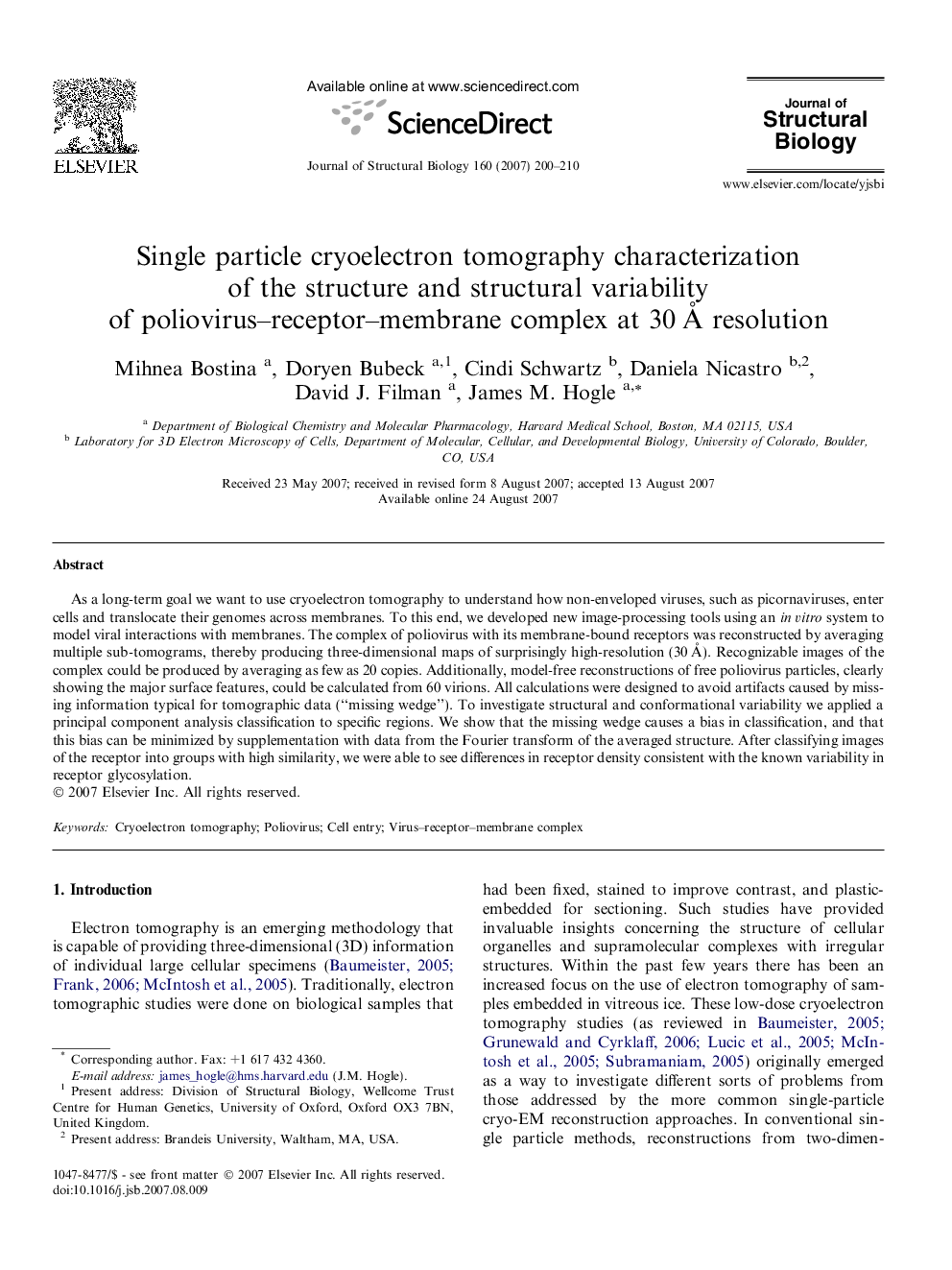| Article ID | Journal | Published Year | Pages | File Type |
|---|---|---|---|---|
| 5915241 | Journal of Structural Biology | 2007 | 11 Pages |
Abstract
As a long-term goal we want to use cryoelectron tomography to understand how non-enveloped viruses, such as picornaviruses, enter cells and translocate their genomes across membranes. To this end, we developed new image-processing tools using an in vitro system to model viral interactions with membranes. The complex of poliovirus with its membrane-bound receptors was reconstructed by averaging multiple sub-tomograms, thereby producing three-dimensional maps of surprisingly high-resolution (30Â Ã
). Recognizable images of the complex could be produced by averaging as few as 20 copies. Additionally, model-free reconstructions of free poliovirus particles, clearly showing the major surface features, could be calculated from 60 virions. All calculations were designed to avoid artifacts caused by missing information typical for tomographic data (“missing wedge”). To investigate structural and conformational variability we applied a principal component analysis classification to specific regions. We show that the missing wedge causes a bias in classification, and that this bias can be minimized by supplementation with data from the Fourier transform of the averaged structure. After classifying images of the receptor into groups with high similarity, we were able to see differences in receptor density consistent with the known variability in receptor glycosylation.
Related Topics
Life Sciences
Biochemistry, Genetics and Molecular Biology
Molecular Biology
Authors
Mihnea Bostina, Doryen Bubeck, Cindi Schwartz, Daniela Nicastro, David J. Filman, James M. Hogle,
